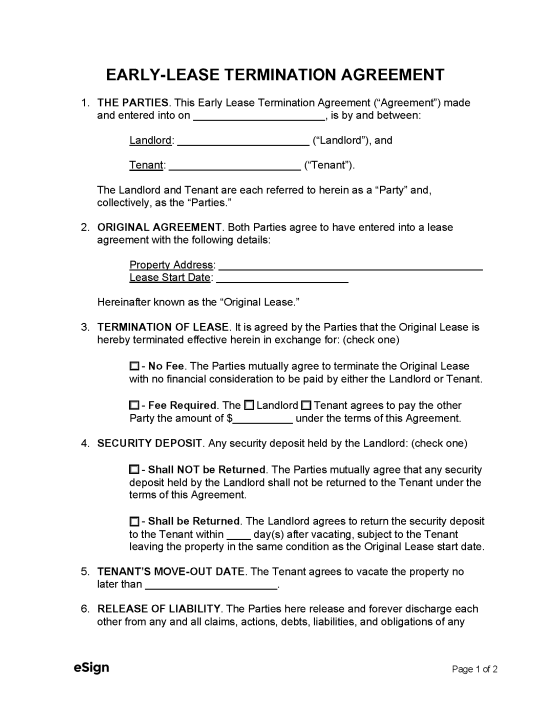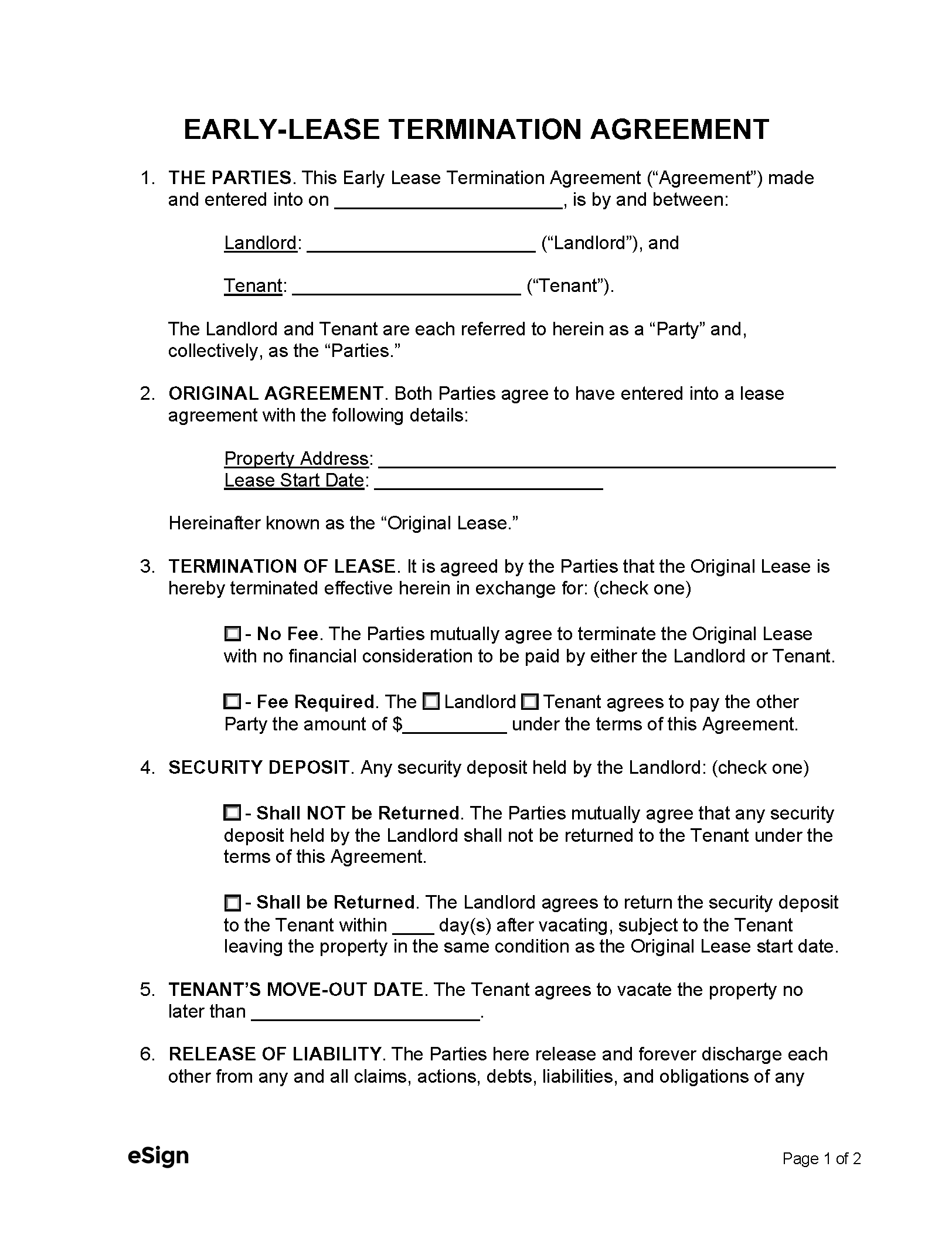Common Reasons for Termination (5)
- Relocating – For either work or school.
- Financial Hardship – Such as a loss of income and inability to afford the rent.
- Lease Violation – If the landlord or tenant has violated the lease and is in default of the original agreement.
- Military Service – If called for deployment of 90 days or more, or being relocated to another base (or “permanent change of station”), a serviceperson can terminate the lease (50 U.S. Code § 3955).
- Domestic Violence – If a tenant is the victim of domestic violence, they may have the right to terminate a lease without penalty (depending on the State).
How to Terminate a Lease Early (4 steps)
1. Approach the Other Party
Whether you’re the landlord or the tenant, it is best to contact the other party by phone or e-mail and inform them why the lease must terminate early. It is recommended to provide evidence to back up the claims; for example, if a tenant claims they lost their job, a copy of the employment termination letter should be sent.
2. Negotiate Terms
If the party requesting termination has no legal recourse, they will be required to obtain the other party’s consent. The best way of getting the other party to agree is to suggest a financial payout to terminate the lease. Otherwise, there may not be motivation for one party to cancel.
3. Sign an Agreement
4. Tenant Vacates
The tenant must vacate the property with its condition to be the same as on the move-in date. If not, the landlord can perform a move-out inspection and deduct the repair costs from the security deposit if damage is found on the property.

